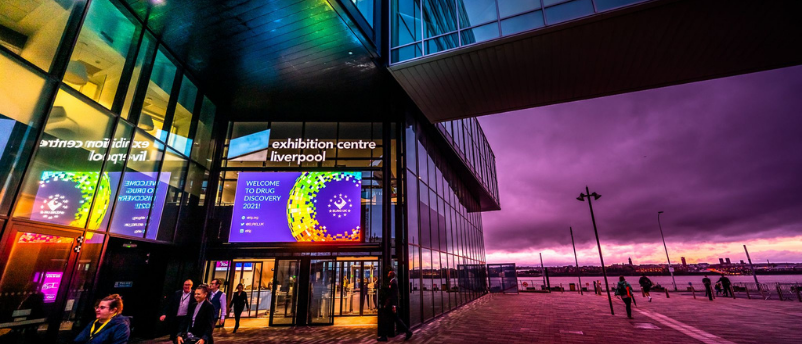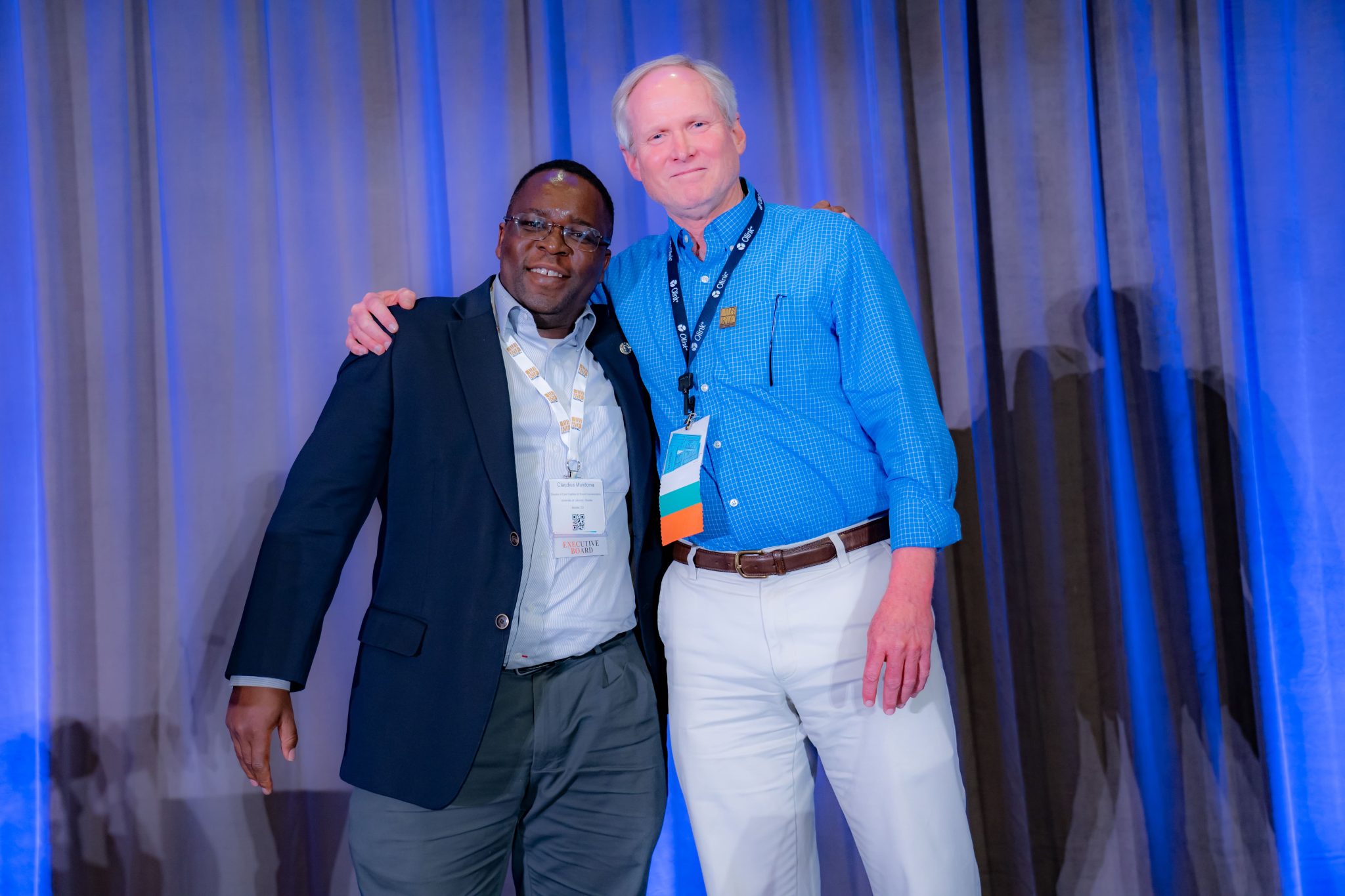ABRF 2022: a conference report

The 2022 Association of Biomolecular Resource Facilities (ABRF) National Meeting took place March 27 – 30 in Palm Springs (CA, USA) and celebrated the theme of Science, Community, Synergy and Resiliency. The ABRF is a non-profit association that supports members working in the area of shared research resources, in particular academic core facilities in the broad field of biotechnology.
For many in attendance, this was our first in-person meeting in nearly 2 years due to the COVID-19 pandemic that has greatly affected all of our lives. During the opening sessions, including introductions and overviews from ABRF President Kevin Knudtson (University of Iowa, IA, USA), Program Committee Chair Allis Chien (Stanford University, CA, USA), and opening keynote presentation from Tricia Cottrell (Queen’s University, Kingston, Canada), there was a clear sense of optimism and relief that we were back together again.
Over the two years since our last in-person meeting (Palm Springs, March 2020), the ABRF has consistently demonstrated its vital role in supporting our core facilities and shared instrumentation centers. During the lockdown, the ABRF formed the nexus of core activity by organizing team and volunteer efforts and hosting numerous workshops and symposia on a variety of topics. These events included pandemic-centric topics such as developing COVID-19 safety protocols, how to prepare for and execute remote training and support as well as more traditional sessions focusing on different technologies or management strategies. Some of this work was highlighted in our 2021 meeting, which was held virtually.
Returning to in-person meetings
For this year’s event, the conference organizers blended the virtual approach from 2021 with what many value most about our society, the opportunity for in-person engagement and live discussion. This involved executing ABRF’s first fully-hybrid conference where each session could be attended in person or virtually, in real time. This required more moderators, more organization, and more patience from all involved. Additional changes included the movement of posters online and the pre-recording of flash talks to enhance the virtual experience. As a result, participants from around the world, who may not have had the opportunity to attend, were able to contribute with questions and feel engaged in the event. This increased accessibility meant that 45% of our participants were able to attend remotely. This was a clear homecoming for many of our community members and an opportunity to welcome those just starting to engage with ABRF.
In the spirit of a resilient turn toward normality, ABRF was proud to host its usual exposition hall. Well stocked with representatives from many of our most relevant and essential commercial partners, the hall was constantly buzzing from open to close. To increase their exposure, many vendors took the opportunity to sponsor an individual session and provide a brief presentation of their products to a targeted audience. Some of our corporate sponsors also took the opportunity to give extended Technology Showcase presentations in the morning or evening while others presented brief lunchtime seminars in the dedicated Innovation Theater sessions. New to the program this year was a block of flex time in the middle of the meeting, used by many to visit and engage with ABRF sponsors or other community members or to take a walk in beautiful downtown Palm Springs and reconnect with the colleagues they hadn’t seen in person for two years.
Key talks from ABRF 2022
ABRF kept to tradition, presenting science and administration-themed talks during the bulk of its sessions. Though there were far too many interesting and relevant talks to list. The topics ranged from managerial and administrative subjects such as cloud computing and data management, life in a small core, and career development, to technical lab topics including long-read sequencing, spatial proteomics, and microbiome metagenomics.
The ABRF also continued its trend of spotting and highlighting the most promising and impactful developing technologies and breakthroughs. One of these talks included the use of mass spectrometry and cryogenic electron microscopy to get unprecedented structural information about molecules in addition to their broader proteomic identities. Others focused on spectral flow cytometry, which provides a substantial step forward in the flexibility and tunability of detection parameters; organoid models in basic and clinical research, where biologists are able to model cellular interactions at increasing levels of structural and developmental complexity; and the first “telomere to telomere” human genome sequence, an amazing step forward described as “the largest improvement to the human reference genome since its initial release.”
One additional brilliant example of this was the wonderful presentation from ABRF Award Winner Dr. Jennifer Lippincott-Schwartz (Janelia Research Campus, VA, USA), an innovator and leader in the field of multidimensional live-cell imaging using fluorescence microscopy. In her plenary session, Dr. Lippincott-Schwartz highlighted the importance of collaboration and teamwork in the advancement of scientific study, notably in the field of Focused Ion Beam Scanning Electron Microscopy of large samples (an entire cell, in this case). While the strengths and benefits of this technique have been known for some time, accomplishing this feat at such a scale has been difficult to implement. The investigators had to overcome issues of data acquisition, analysis and data storage, similar challenges that many of us face in our day to day lives. The methods and collaborative multi-disciplinary environment led by Dr. Lippincott-Schwarz is one that we can all point to as to why cores and their interconnectivity are needed and fundamental for scientific rigor and reproducibility. Note: all awards also highlighted below.
 ELRIG UK’s Drug Discovery 2021 Conference Report
ELRIG UK’s Drug Discovery 2021 Conference Report
At this free-to-attend, in-person event experts from industry, academia and global pharma provided engaging discussions on key issues and future directions in preclinical drug discovery.
In two areas of critical importance, ABRF also continued to advance its role in promoting stewardship of the environment and broadening the representation of under-represented groups within the scientific community. These efforts took center stage in separate plenary sessions dedicated to sustainability in science and diversity, equity, access and inclusion (DEAI). The breadth and depth of the session topics were substantial and relevant to us all.
The ABRF demonstrated great initiative in its efforts to merge the virtual and the in-person; striving to engage as many of our community members as possible while providing new opportunities for outreach to others. While it would be great to report that all this went off without a hitch, unfortunately, that was not always the case. Simultaneously hosting the national meeting in real and virtual space realized the benefit of increased accessibility (45% of our registered attendees were remote) but executing the event in this manner was not without growing pains. Though some technical issues and interruptions were, unfortunately, more disruptive than others, they were all valuable learning experiences and presented teachable moments that many of us are unlikely to forget. However, instead of focusing on what went awry, the attendees and ABRF representatives should not lose sight of what their goal was: to evolve and grow in our current reality, creating an environment that is welcoming and accessible to us all, with patience, respect, humility and support. While acknowledging shortcomings in execution is essential for growth, equally important is maintaining our resiliency and learning how to improve and wield these technologies seamlessly in the future.
Africa and the ABRF
For years, the ABRF has been working with similar organizations, developing partnerships and discovering new regions for outreach. Recently, much of this effort has been focused on African research centers. We were fortunate to host two sessions focused on how to best support the needs of our international colleagues. To this end, Teng-Leong Chew (Janelia Research Campus) shared with us an exciting endeavor to develop modern scientific microscopes at an accessible cost for the developing world, launching an initiative titled the Africa Microscopy Initiative (AMI, French for “friend”). Leong further highlighted a recent multi-day microscopy-focused workshop (January 13-17, 2020) held in Cape Town, South Africa. The workshop titled “Imaging Africa” was made accessible to investigators throughout the entire continent of Africa by organizers who were able to engage multiple philanthropic and commercial entities to fund the workshop. Access to the workshop was also enhanced by being mindful of, and incorporating DEAI practices throughout the organization and selection process. In all, 24 participants were selected from 712 applicants, representing 14 nationalities. The success of this workshop, and the number of applicants, greatly demonstrate the desire for scientific pursuits that can be greatly augmented through the establishment and support of core facilities throughout Africa.
Additionally, this session also highlighted the importance of developing methods to provide more affordable high-quality instrumentation to Africa through novel means. The success of this model could serve as a template to provide support for other under-represented scientific communities. Finally, on a related note, the ABRF was proud to announce the formation of an African chapter. Through much personal effort by ABRF member Claudius Mundoma (University of Colorado Boulder, CO, USA), the creation of this chapter will allow the ABRF to act as a partner for the creation and organization of core facilities in the region. These are just a couple of the exciting developments that exemplify the attitude and ethos of the ABRF.
The atmosphere at ABRF 2022
During the members’ meeting we were again inspired by a touching memorial from Nick Ambulos honoring past member Alan J. Smith. Smith was a founding member of ABRF who passed away in September 2021, and his legacy will live on through a fund created to support ABRF mentoring activities and in the hearts of the many who were inspired by his dedication and mentoring.

Claudius Mundoma (University of Colorado Boulder) and Christian Lytle (Dartmouth) at the closing session of the ABRF National Meeting.
Throughout the meeting, we were constantly reminded as to why we all support the ABRF and love it so much: the strong sense of family and community. The ABRF seeks to create a safe space that affords us the ability to speak openly and honestly with our colleagues from throughout the country and the world. It is the one place where we can sit, with a beverage in hand, to discuss the challenges we face, our concerns, and tribulations with others that are in similar positions. Further, together we can brainstorm ideas and concepts that may result in viable and implementable solutions for us all. While we are all unique individuals, and the level of support and interaction with our universities and research institutes vary, here, at the ABRF, we are all equal and we are all trying to help each other succeed. This was demonstrated and embodied throughout our annual meeting.
Rounding up ABRF 2022
At the end of our annual meeting, we were treated to the traditional closing remarks from our president. Unlike two years ago, when many of us saw the impending epidemic, without knowing its eventual impact, this time there was a strong sense of optimism. Much has changed within the ABRF. The financial situation of our association has improved thanks in no small part to our partners at AMR Management Services and our current and past leadership. The number of members has also grown to an unprecedented high, with participation from 46 states and 17 countries. ABRF President Kevin Knudtson will retain his position moving into a second year in this role. However, two long-serving Executive Board (EB) members will be stepping down. Christian Lytle (Dartmouth, NH, USA) and Claudius Mundoma (University of Colorado, Boulder, CO, USA) will be cycling off the EB after dedicatedly serving us all, while expanding our impact and stabilizing our overall financial status. While we say goodbye and thank you to Christian and Claudius, we also say welcome to our newest EB members Sue Weintraub (University of Texas Health Sciences Center, TX, USA) and Kym Delventhal (Stowers Institute for Medical Research, MI, USA).
Two years ago, many of us sat in the same meeting room, Primrose B, of the Palm Springs Convention Center and learned that the next National meeting would be taking take place in Boston. Unfortunately, circumstances would prove too challenging for an in-person meeting in 2021. Again, this year on the last day of our meeting, sitting in Primrose B, the location of the next meeting was announced to be Boston. However, this time, instead of a looming cloud, many of us are seeing the sun breakthrough. We are looking forward to our next National meeting, when we will capitalize on our momentum while incorporating the lessons learned here, making it the must-attend event of 2023 for many of us.
Award winners at ABRF 2022
ABRF Award Winner: Jennifer Lippincott-Schwartz (Janelia Research Campus, VA, USA).
Diversity, Equity, Access and Inclusion Award Winner: Emily Pinckney (500 Women Scientists, CO, USA).
Waters Poster Award Winners: Morgan Coleman (Morehouse School of Medicine, GA, USA), Laura Lewis-Tuffin (Mayo Clinic), Garvey McKenzie (Stanford University and Charles Farnsworth Cell Signaling Technology).
Outstanding Scientist Scholarships and Founders Award: Kristina Belanger (Harvard, MA, USA), Kaitlyn Petentler (Stowers Institute, MO, USA), Mystera Samuelson (University of Nebraska Medical Center, NE, USA), Shanmugapriya Selvaraj (NYU Langone Medical enter, NY, USA) Kelly Cribari (Harvard, MA, USA – Founder’s Award).
Robert A. Welch Outstanding Research Group and Committee Member of the Year: Robert Steen (Harvard, MA, USA).
Journal of Bimolecular Techniques Manuscript of the Year Award:
Moore J, Cahill J, Aidelberg G et al Loop-Mediated Isothermal Amplification Detection of SARS-CoV-2 and Myriad Other Applications. J. Biomol. Tech. 32(3), 228–275 (2021).



